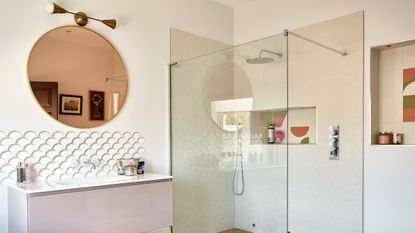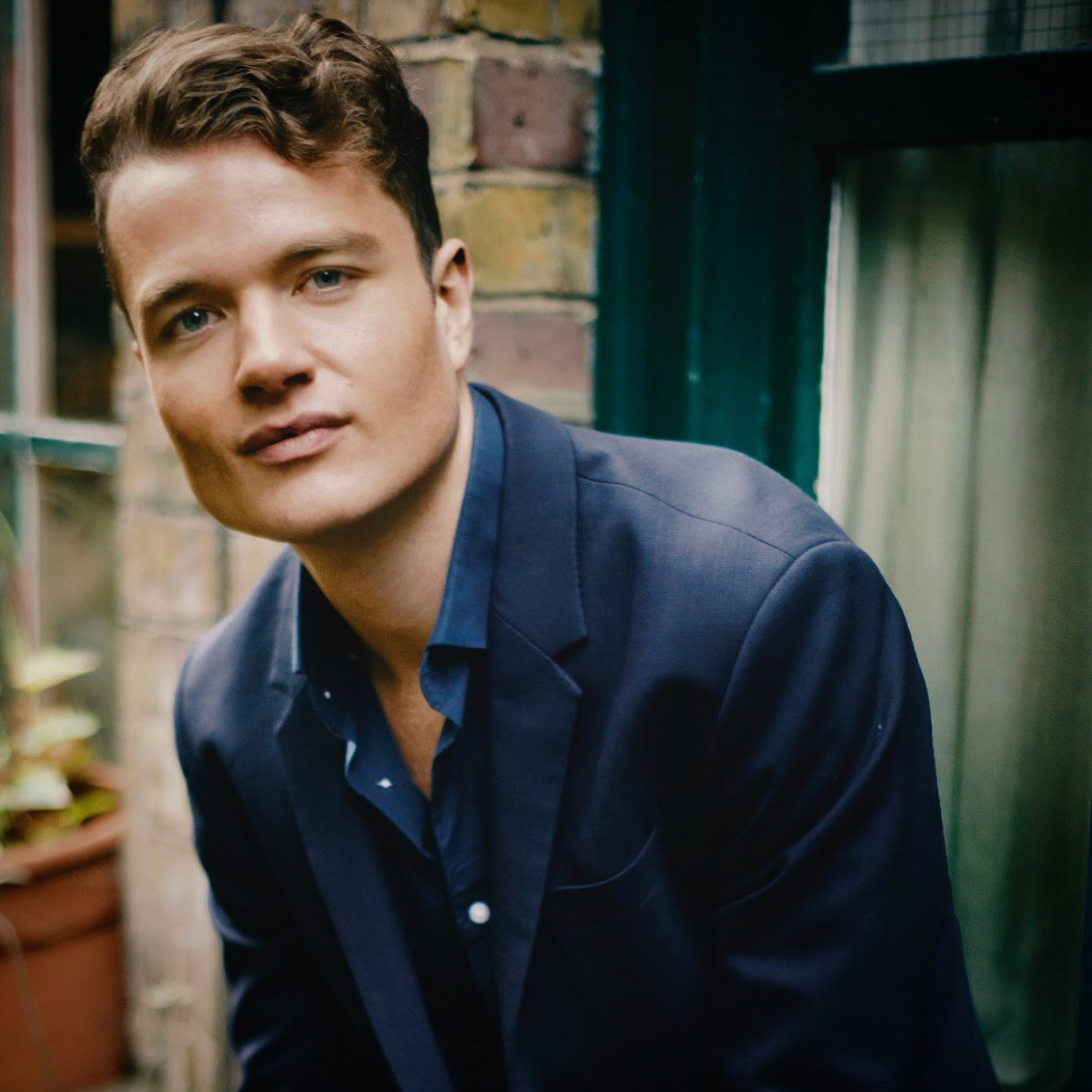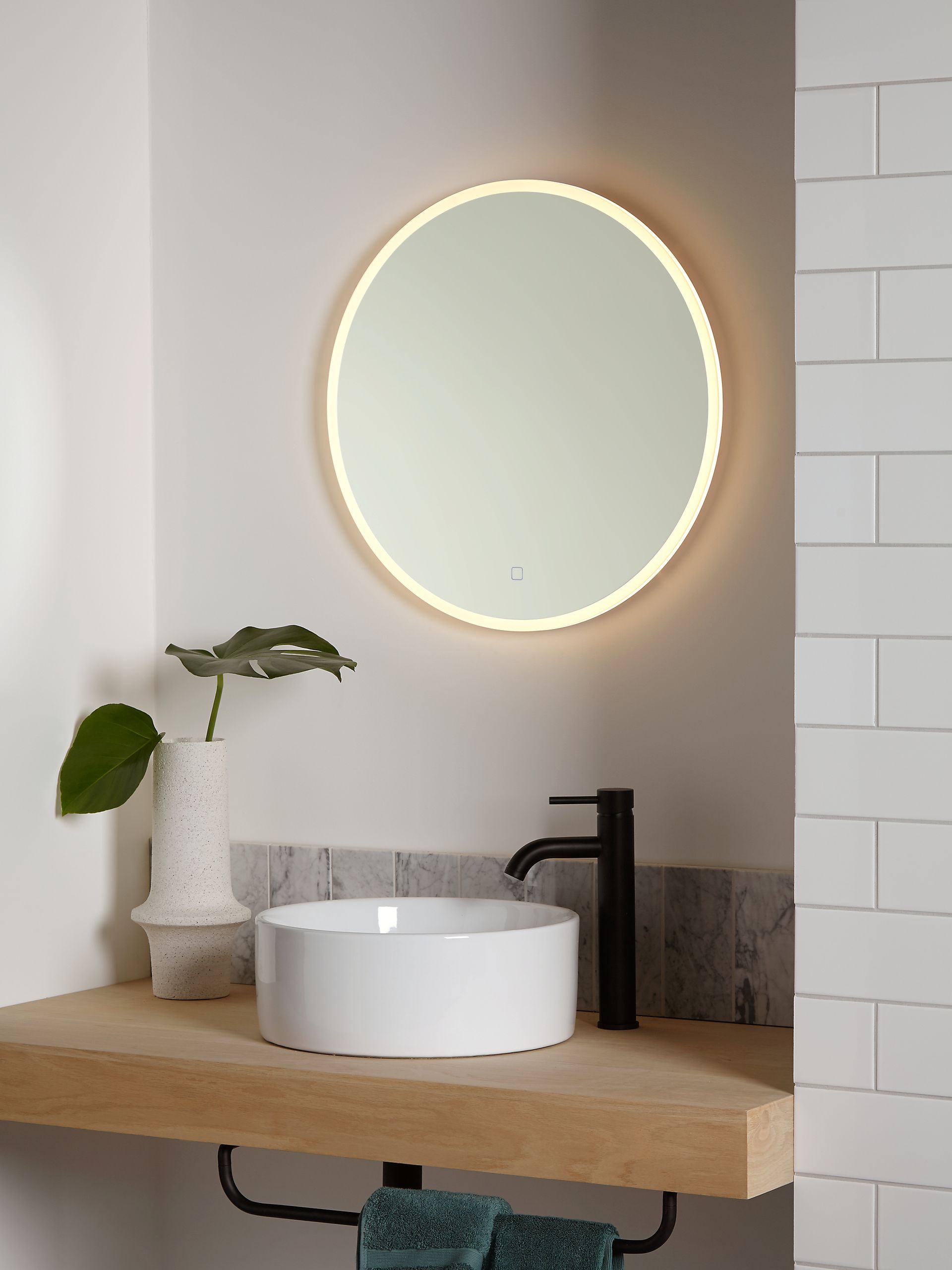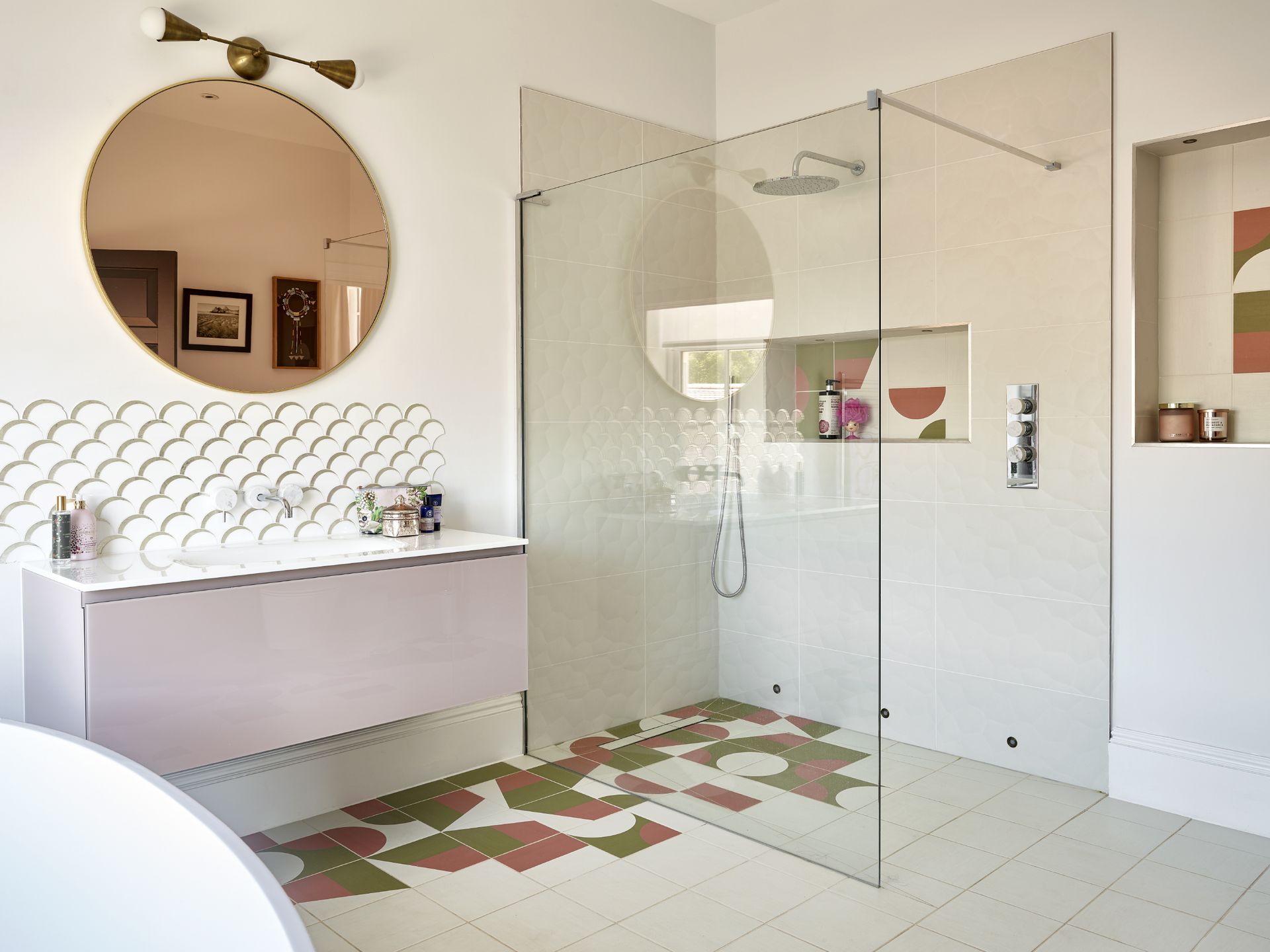Bathroom mirror lighting ideas – how to pick the perfect flattering light for your space
Bathroom mirror lighting ideas may seem like an afterthought when remodeling a space but getting this small detail right can be key to illuminate your room effectively


Let it be known that bathroom mirror lighting ideas are an important aspect of getting a bathroom design just right. Why? Because, if designed correctly, it can really flatter the person in the reflection – leaving the room with a bounce in their step!
However, it’s an area of interior design which many people try to skip over. It can pose as a somewhat technical design task. There are building rules and regulations which dictate what kind of lights you can use in a bathroom. It makes sense, seen as mixing electricity and water isn’t advisable, for obvious reasons!
Then there’s the consideration of brightness, shadows, and, lest we forget, style! Get bathroom lighting right, and you have essentially conquered what is regarded as one of the most fiddly design tasks in the interiors industry.
But it’s worth it, as design director of C.P. Hart Yousef Mansuri comments, 'Incorporating good lighting into a bathroom is incredibly important, and this includes mirror lighting. Achieving the right balance of ambient and task lighting can really ‘make’ a room!'
Here we have brought together all the expert advice you need to ensure your bathroom mirror lighting looks great as well as being safe to use...
Inspiring bathroom mirror lighting to transform your space
1. Opt for adjustable lighting around a mirror

Sleek and thought-through, opting for a bathroom mirror that already includes lighting makes a whole lot of sense. Because incorporating the lighting into the mirror means that, effectively, you’re editing out the need for a separate light or lights.
A built-in mirror light tends to keep everything streamlined and fuss-free when you’re faced with designing or fitting out a bathroom, and, if you’re not feeling terribly confident then this is the preferred option when approaching bathroom mirror lighting.
Michelle McGuire, partner and bathroom buyer at John Lewis, says, 'Illuminated mirrors offer customers the opportunity to alter the lighting in the bathroom and enjoy the flexibility of practical and ambient light within the product itself.'
2. Increase the warmth with a rose-gold tinted effect mirror

Round mirrors are also particularly on-trend at the moment, as C.P.Hart design director Yousef Mansuri comments, 'Round mirrors are a huge current interior design trend and tend to soften a space and break up angular linear lines, which can sometimes dominate bathrooms. These also act as features and focal points to designs and can be supplied with or without lights.'
You might also want to opt in to the technology of a demisting mirror – a game-changer if you like a steam room type situation in the bathroom or want to include a mirror in a wet room.
And then there are the chic rose-tinted round mirrors which are proving a popular choice too. Interior designer Caz Myers shows in this bathroom design how a rose gold tinted round mirror can work wonders in a vanity bathroom area.
The warm lighting level is coupled to warm mid-century style brass bathroom mirror lighting, all adding extra radiance and glow to the vanity lighting area as the mirror warmly reflects everything with a blush glow.
Take home tip: this looks particularly good if you pick out elements, such as Caz has done here with the vanity unit, in an equally warm and blushy color hue.
3. Choose concealed mirror lighting for a sleek and seamless look

Getting a little more technical, but ever so chic, is the concept of concealed bathroom mirror lighting. The whole point of concealed lighting is of course, unless it’s on, you don’t really notice it – and even when it is on, it’s all about that subtle moody ‘glow’. You wouldn’t necessarily spot it, but both of these bathroom designs by Caz Myers Design incorporate sleek, discrete, concealed mood lighting behind the mirrors.
'Subtle floating lighting is simple, effective, and achieves a flattering warmth and an even glow which adds to the mood of a bathroom. We always use a warm white when sourcing any lighting/bulbs rather than a cold light', says Caz.
A question that might be on lips when looking specifically at concealed bathroom mirror lighting design? Do you need an electrician? Caz Myers says that she would, 'Definitely advise to use an electrician to achieve the best effects and to make sure this lighting is incorporated in with the rest of the lighting circuit. Additionally, if it’s a bathroom design for children, you could even introduce fun color-changing lighting.'
4. Or use recessed lighting to illuminate a more traditional space

Additionally, it’s a design trick that can be used whatever the style of the bathroom mirror, as Caz highlights, 'The effect is the same no matter what the style of mirror or bathroom and whether contemporary or more traditional. A similar concealed effect also works extremely well below floating vanity cabinets, and this can still be teamed with wall-lights for an additional light source.”
Both of these projects show how Caz has implemented clever concealed bathroom mirror lighting in both a modern contemporary bathroom mirror design, as well as one which sits in line with a traditional bathroom sink and more decorative mirror. Both, we think, are beautiful.
5. Hang lighting fixtures within the mirror panel

This gorgeous white bathroom demonstrates design kudos. Bringing the ultimate style factor to an illuminated bathroom mirror setup is the idea of mounting lighting on top of a large expanse of mirrors. Avoiding overhead or side hung lighting as is seen most commonly in vanity sink setups, this idea shows that the devil truly is in the design detail.
Bathroom aficionados C.P. Hart demonstrates how bulkhead industrial-style lighting can be mirror mounted (yes, with caution and care, actually mounted into the middle of the mirror panel itself) for great style impact and a look that’s often associated with the most luxury bathrooms found in hotels.
Yousef Mansuri says, 'One of the most popular trends we are seeing currently for lights is Hotel Luxe. We are seeing a lot of sleek and elegant designs, often taking inspiration from the Art Deco era.'
In this space, C.P. Hart has shown how it’s possible to mix a bit of industrial (which we’re going to talk about in just a second) with a high-end hotel luxe look.
6. Add an industrial edge with bathroom wall lighting

As you may have gathered by now, there are various styles and finishes to choose from when specifying your bathroom mirror lighting, such as Art Deco designs (look out for svelte, symmetrical detailing) and neo-classical design mirrors too, some of which sport a more elaborate gold.
However, on the opposite end of the spectrum, it’s matt black and grey steel industrial-style bathroom mirror lighting which is proving to be a similarly buoyant trend.
'For Industrial, we are using a lot of exterior lights within bathrooms because they are waterproof and rated IP44. This really opens up the possibilities', comments Yousef.
Chic, and let’s be honest, a fairly nice straightforward option too.
7. Keep it simple with classic chrome fixtures

Still feeling a little stuck? If you’re looking for the most acceptable and widely appreciated style and finish, then John Lewis bathroom buyer Michelle McGuire advises to stick to the most popular finish of chrome, and to keep mirrors and lighting simple but beautiful.
'For most people, chrome is the go-to finish for most of their bathroom taps and accessories. Because of this, chrome is also often the finish of choice for a mirror, as people generally prefer consistency across the overall design of a bathroom.'
'Chrome can suit a number of styles and designs and works on a number of levels without being too bold.' explains Michelle, citing Art Deco, Mid-century, and contemporary style choices as being popular.
Michelle also hones in on another bathroom trend, 'black and brushed brass are also popular alternatives.' You don’t need to go as harsh or dramatic as jet or matt black, but definitely in the darker spectrum of tone to the more commonly seen chrome.
8. Layer you bathroom mirror lighting for a flattering glow

A key question, no doubt, is 'what’s going to be the most flattering mirror lighting?!' and that’s a very fair question indeed, and it’s one we are pondering too. Well here’s the thing, it’s all about layering your lighting with multiple bathroom lighting options!
To have mirror lighting success in a bathroom Caz Myers heralds not just low-level mood lighting, but also the use of multiple light sources in and around a mirror area.
'Mood lighting in bathrooms is hugely important, as well as the use of varied light sources. Whether floating behind mirrors, wall-lighting, niche lighting, low-level lighting below vanity units or in a walk-in shower, all add layers to create good lighting in a bathroom.'
The concept of layering different types of lighting in a bathroom mirror area makes great sense, as various light sources will help diversify the ability to vary lighting brightness, strength, warmth, evenness, and all add to the functionality of a lighting scheme in a bathroom – no matter what the style is.
Caz comments, 'We always design lighting on a dimmer system to achieve a variety of lighting levels. It is important to consider the use of bathrooms; at different times of day or night. For example, a relaxing bath at night with low-level calm lighting, practical task lighting for makeup, and occasional low-level lighting for the middle of the night'.
How big should light be over bathroom mirror?
The size of a light above a mirror will depend on the size of your mirror. As a general rule of thumb a light fixture should never exceed the dimensions of the mirror it sits above, and ideally should be around 1/3 of the width of the mirror. If you have a huge mirror or multiple mirrors sat above a vanity, you may want to choose more than one fixture. It depends on how many lights go for, but if going for a few fixtures pick designs that are no larger than 3/4 the size of the mirror.
What does IP rating mean?
Still with us? Good! This is the bit where people tend to loop out, and in some cases run. However it’s actually not as scary as it sounds, and we’re going to keep this technical bit really short and sweet.
Bathroom lighting falls under certain building regulations, regulations which need to be adhered to in order to demonstrate that your home and property is safely constructed and designed. When people mentioned ‘IP’ this references and stands for ingress protection, and this comes into play when you’re looking to install electrical equipment (including lighting) into a bathroom or wet room.
IP ratings vary, depending on which area of the bathroom or wet room you are installing the electrical fixture or fitting in. Light fittings receive an IP rating based on two factors. These are 1/ resistance of solids, and 2/ resistance of liquids. An IP rating will be displayed as “IP**”, the last two digits indicate the level of resistance to solids and liquids.
Lighting requires an IP44 rating if it’s located within Zone 2 in the bathroom or wet room, whilst the higher IP65 rating is required in Zone 1.
Looking at it pragmatically, if it’s an area that gets wet or comes into contact with heavy levels of moisture then it’s generally recommended to opt for the higher IP65 rating, whether you technically need to or not. The higher rating guarantees that the fixture or fitting has been sealed to a higher standard.
Be The First To Know
The Livingetc newsletter is your shortcut to the now and the next in home design. Subscribe today to receive a stunning free 200-page book of the best homes from around the world.
Rory Alastair Robertson has a long-standing history working across the interiors industry. Raised in Morningside, Edinburgh, Rory grew up surrounded by classically grand Scottish Georgian and Victorian architecture.
His first appreciation for interior decoration sparked when his mother hired scaffolding and decorated their three-storey Victorian staircase in Farrow & Ball Picture Gallery Red, by herself. She then painstakingly gold leafed the drawing room - by hand - over a base coat of Sudbury Yellow. This was the era of Jocasta Innes and Kenneth Turner, when paint techniques and maximalist style were the decorating raison d'être.
With this inherited gene of creativity, Rory went on to study Interior Architecture at the University of Edinburgh, and later, Theatre Set Design and Architectural Illustration at The Rhode Island School of Design on America's East Coast.
Rory's foray with the editorial world started a decade ago at Livingetc magazine, a title which he regularly contributes to today. Specialising with a deep-seated appreciation for historical homes and interiors, Rory often travels far and wide to be inspired by unique properties with a fascinating history.
If he’s not uncovering an unusual National Trust property in the UK, then he’s seeking out a Neo-Classical clifftop villa in Capri or a Palazzo in Florence.
Based in London’s Shoreditch, working as a Senior Interiors Editor and Consultant, Rory's portfolio of work is a creative melting pot of residential and commercial interior design projects and a plethora of editorial writing work. Rory is also Guest Interiors Lecturer at the prestigious KLC School of Interior Design in Chelsea, London. His most cosseted possession is a ramshackle Citroen Deux Chevaux, which he has reupholstered in Pierre Frey yellow and turquoise silk fabric.
Discover more at roryrobertson.co.uk and @rory_stylist.
-
 These 12 Best Table Lamps for Your Desk — Perfect Glows for a Creative Home Office
These 12 Best Table Lamps for Your Desk — Perfect Glows for a Creative Home OfficeThe best table lamps for your desk is have a soft, targeted glow. Elevate your WFH set-up with these stylish picks endorsed by Style Editor Brigid Kennedy
By Brigid Kennedy Published
-
 The Nespresso VertuoPlus is 30% Off for President's Day, and it's Kim Kardashian's Coffee Maker of Choice
The Nespresso VertuoPlus is 30% Off for President's Day, and it's Kim Kardashian's Coffee Maker of ChoiceThis sleek and stylish coffee maker was spotted in Kim's home bar, and you can currently save $60 if you buy yours from Amazon
By Lilith Hudson Published

